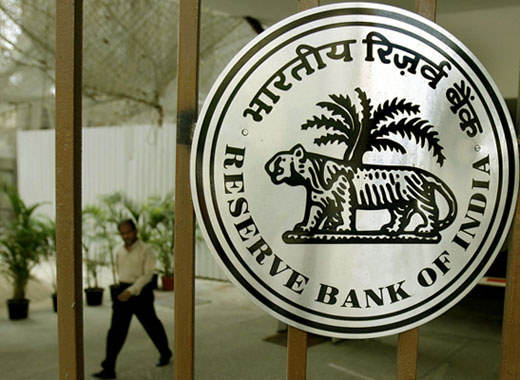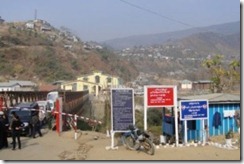JAYANTA ROY CHOWDHURY & R. SURYAMURTHY

New Delhi, Nov 7 : India is finally waking up to the huge benefits it can derive from trade in its immediate neighbourhood.
Bilateral trade with its South Asian neighbours rose more than a third in 2010-11 over the previous year to nearly $16 billion. Trade with Bangladesh alone has almost doubled to more than $4 billion over the same period.
To fuel this growth, India is building a web of ports, highways and railways that will help it to integrate better with the markets of the sub-continent.
Next week, even as the heads of states of the region meet in Male, Indian businessmen have started talking about a trans-subcontinental gas grid, which would carry gas from Afghanistan, Iran, Myanmar and Turkmenistan through the region and an electricity grid to distribute electricity generated in India, Bhutan and Nepal to other power-starved parts.
Bangladesh bond
In just one year, India’s two-way trade with Bangladesh has gone up from $2.68 billion to $4.05 billion. If illegal cross-border trades in cattle to Bangladesh and sarees to India are added, the figure can surge to well over $7 billion.
“Good relations and adroit commercial diplomacy by the two sides has helped us along and we hope this will grow with transit and water sharing treaties,” says Tariq Ahmad Karim, Bangladesh’s high commissioner to India.
The sudden jump was a result of an almost 68 per cent increase in Bangladesh’s exports to India over the previous year. India’s exports went up about 43 per cent over last year.
Trade is expected to be even better this year with India deciding to allow duty-free import of 43 lines of garments.
Amit Ladsaria, who runs the Calcutta-based Turtle brand, said, “They are cheaper and have huge high quality garment making capacity. So, we are testing waters. If the dollar rate holds, then we will go ahead and give contract manufacturing orders to Bangladesh units.”
Transit through Bangladesh for northeastern products could, however, be the real game changer.
Many expect Cachar in Assam, which has a history of industrialisation, and Chittagong, which could be the Northeast’s entrepôt, to become processing zones for minerals, farm and textile goods, benefiting both India and Bangladesh with the mushrooming of industries in these areas and low cost sale to mainland India and abroad.
A high-level Bangladesh tariff commission has made recommendations to the Sheikh Hasina government on the rates it should charge from Indian businesses for transit through that country. The rates roughly work out to 7 cents a tonne a km for roadways, 3 cents for railways and 2.5 cents for waterways.
Ficci secretary-general Rajiv Kumar says, “It would be a big positive for both countries if the transit treaty comes through. Just the fact that Bangladesh has decided on a rate list is good news.”
The actual deal would of course depend on political will. Sheikh Hasina has hinted that transit can be allowed if India signs treaties for sharing river water flowing from Assam and Bengal to Bangladesh.
For Bangladesh, however, there is another game changer — hooking on to India’s electricity grid. This will give it access to electricity generated not only in India but also in Bhutan and Nepal.
Bangladesh’s unmet electricity demand is estimated at over 1,200MW for 2011 and has resulted in crippling power blackouts for up to 9-10 hours in peak summer.
“We are willing to invest in Indian, Bhutanese and Nepalese thermal power plants,” for a steady supply of power, said Ahmad Karim.
Access to Pakistan
India-Pakistan trade is set to grow to $8 billion in five years with the South Asian neighbours taking steps to boost economic ties.
Trade relations between the two countries, which had gone into a deep slumber, seem to be once again waking up with Islamabad agreeing to grant India the most favoured nation status (MFN) — which means Pakistan will charge the same duties on Indian produce that it does on any signatory to the WTO trade agreement.
CII director-general Chandrajit Banerjee said, “Pakistan’s decision to grant the MFN status can transform the whole trading environment in the region.”
Pakistan still has to work on the fine print and decide which items will be off its list of imports to protect its domestic industry.
Still, New Delhi can hope to gain market access for its pharmaceutical, plastic and industrial chemical producers. Pakistan would get access for its farm products, textiles, cement and surgical instruments.
The power-deficit Islamic nation is also looking to set up transmission infrastructure in a joint ownership to facilitate the wheeling of around 500MW of electricity via Amritsar.
India is keen to export petroleum products and get natural gas through a pipeline from Turkmenistan and Iran. This will not only provide several hundred millions of dollars to Pakistan as transit fee but also spur industrial activity in the region.
Besides, the two nations are looking to ease investment norms, liberalise the visa regime and set up banks.
Analysts said the opportunities for strengthening bilateral trade and investments were huge but mostly untapped.
While Pakistan stands to gain from entering the fast growing Indian market, New Delhi, too, sees the benefit of having access to natural resources and trade routes from Asia to Europe through Pakistan.
Increased trade would also push Pakistan’s about $200-billion economy to grow at a faster pace.
At the time of independence, trade relations were very strong — 70 per cent of Pakistan’s trade were with India and New Delhi exported 63 per cent of its goods to Islamabad. It came to less than one per cent in 2010-11.
The decline in trade relations also got reflected in the economic growth of the two nations, with Pakistan’s economy growing at 2.4 per cent in 2010-11 fiscal, while India expanding 8.5 per cent during the same period.
Concerns that Indian goods could flood Pakistan’s markets and affect their domestic industry were a misnomer. Nisha Taneja, trade analyst with the Indian Council for Research on International Economic Relations, said, “China is the biggest trading partner of Pakistan and New Delhi would have to be competitive to get its market share.”
However, the big boost would come with the preferential trade agreement, which would provide lower duties and spur greater economic activity.
Scope in Afghanistan
India is looking beyond the Silk Route to strengthen economic relations with Afghanistan. The transit trade agreement between Islamabad and Kabul will open the land route for the movement of goods through the Wagah border. New Delhi is likely to ask Islamabad to provide transit facility for its goods.
Apart from the land route, alternative trade channels are being worked out by New Delhi to strengthen economic relations between the two countries. India is looking at developing ports, rail line and roads to boost trade relations after gaining the confidence of the people of Afghanistan by setting up hospitals and other facilities.
India and Afghanistan have reached a pact on strategic and economic co-operation, including the exploration of untapped mineral wealth in the war ravaged nation.
New Delhi plans to construct a 900km railway line that will connect Chabahar port in Iran to the mineral-rich Hajigak region of Afghanistan. This will open up opportunities for Indian companies to explore Afghanistan’s mineral wealth, believed to be worth $1-3 trillion. It will also reduce Kabul’s dependence on Islamabad by gaining access to sea.
US geologists and government officials estimated last year that Afghanistan was sitting on unexploited mineral reserves such as copper, iron ore, lithium, gold and cobalt worth over $1 trillion. Gaining access to the unexplored mineral would boost the Indian economy.
The $7.6-billion Turkmenistan-Afghanistan-Pakistan-India (TAPI) pipeline is likely to provide natural gas to India and boost industrial development across the pipeline in the neighbouring nations, apart from a transit fee.
“Afghanistan’s economic integration with the Indian economy and South Asia as a whole is in the national interest of the people of Afghanistan, and one of the ways to achieve this is to promote closer trade, investment and transit links,” Prime Minister Manmohan Singh has said.
 Guwahati, Jan 18 : Bajaj Auto is looking to emerge as the market leader in Northeast India. Presently around 40,000 bikes are sold in Northeast India in a month.
Guwahati, Jan 18 : Bajaj Auto is looking to emerge as the market leader in Northeast India. Presently around 40,000 bikes are sold in Northeast India in a month.









 Shillong, Mar 26 : Having prioritised to provide banking service to the people
of North-East, Reserve Bank of India had decided to compensate
commercial banks for revenue loss in the process, RBI officials said on
Friday.
Shillong, Mar 26 : Having prioritised to provide banking service to the people
of North-East, Reserve Bank of India had decided to compensate
commercial banks for revenue loss in the process, RBI officials said on
Friday.
 Mumbai, Jan 19 : Cautious exports due to bird flu fear in Orissa and Meghalaya may result in softening of egg and poultry product prices in the domestic market.
Mumbai, Jan 19 : Cautious exports due to bird flu fear in Orissa and Meghalaya may result in softening of egg and poultry product prices in the domestic market.


 Mumbai, Nov 18 : Swiss dairy major Nestle’s Indian subsidiary, Nestle India, on Thursday said it is actively scouting for locations in the north-east for setting up a manufacturing plant in the region. The company will initially focus on packaged foods such as noodles and chocolates “We
Mumbai, Nov 18 : Swiss dairy major Nestle’s Indian subsidiary, Nestle India, on Thursday said it is actively scouting for locations in the north-east for setting up a manufacturing plant in the region. The company will initially focus on packaged foods such as noodles and chocolates “We 






